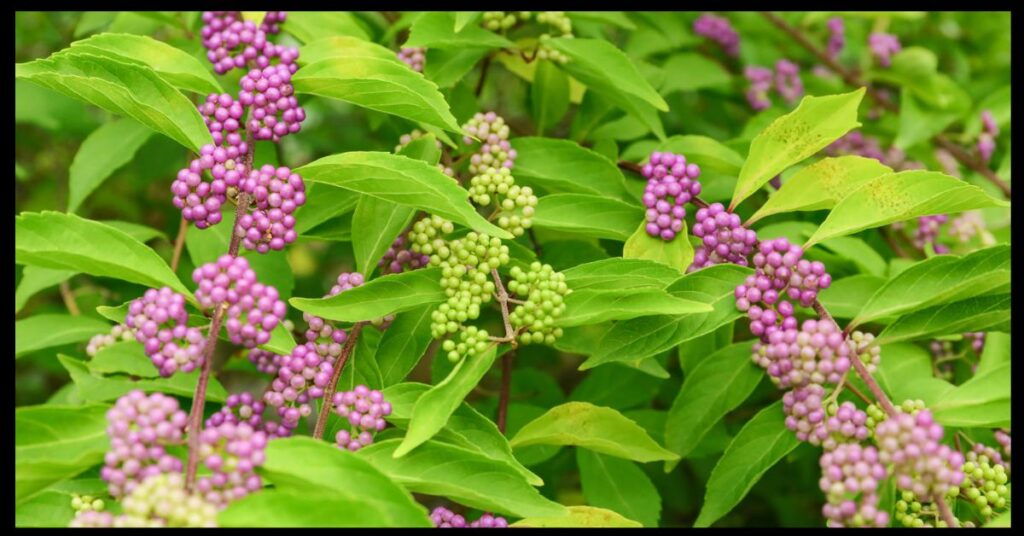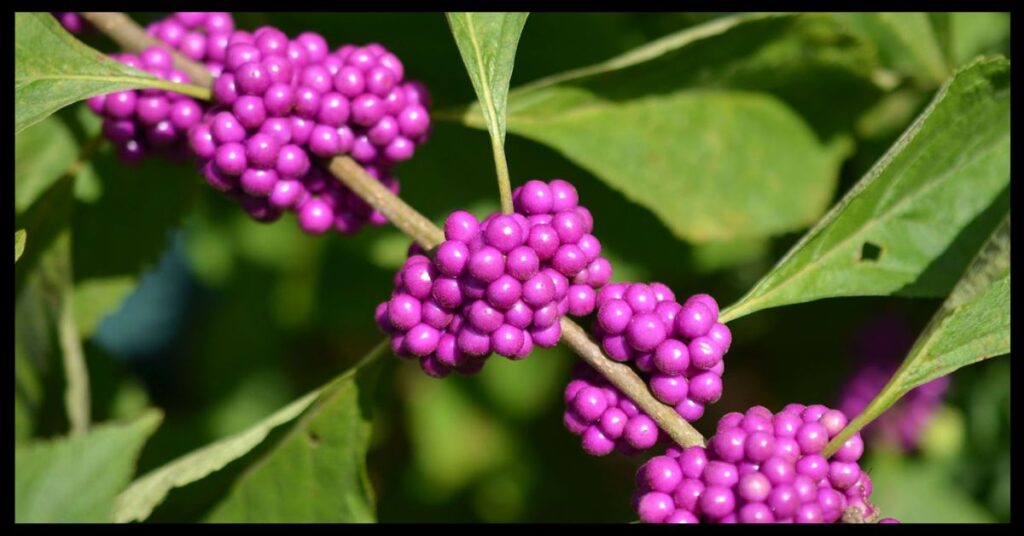Pest control is an essential aspect of maintaining a healthy garden or outdoor space. While chemical insecticides are commonly used, many people are turning to natural, eco-friendly alternatives. One such solution gaining attention is a French mulberry bug spray recipe. Known for its natural pest-repellent properties, French mulberry (also known as Callicarpa americana or American beautyberry) is an effective and environmentally safe choice.
This article provides a comprehensive guide to making and using French mulberry bug spray, backed by accurate information and structured to support organic gardening efforts.
Table of Contents
ToggleWhat is French Mulberry?
Callicarpa americana, commonly called French mulberry or American beautyberry, is a deciduous shrub native to the southeastern United States. It is easily recognized by its vibrant clusters of purple berries and serrated green leaves. While the plant is often grown for ornamental purposes, it has been used traditionally in folk medicine and as a natural insect repellent.
Key Characteristics
- Scientific Name: Callicarpa americana
- Common Names: French mulberry, beautyberry, American beautyberry
- Growth Habitat: Southeastern U.S., prefers partial shade and moist, well-drained soil
- Key Uses: Ornamental landscaping, herbal remedies, natural bug repellent
Natural Insect-Repellent Properties
French mulberry leaves contain compounds like callicarpenal, intermedeol, and spathulenol, which have been shown to repel mosquitoes and other biting insects. According to research conducted by the USDA Agricultural Research Service, callicarpenal was found to be nearly as effective as DEET at repelling mosquitoes.
These natural compounds offer an alternative to synthetic pesticides, reducing potential harm to beneficial insects, animals, and the environment.
Benefits of Using French Mulberry Bug Spray
Using a French mulberry bug spray provides several advantages:
- Chemical-Free Pest Control: Reduces exposure to synthetic pesticides.
- Eco-Friendly: Biodegradable and non-toxic to the environment.
- Safe for Humans and Pets: When prepared correctly, it’s safe for general use.
- Cost-Effective: Ingredients are either free (if the plant is available locally) or inexpensive.

French Mulberry Bug Spray Recipe
Creating a homemade French mulberry bug spray is a simple process. This natural repellent can be made using fresh leaves from the plant and a few household ingredients.
Ingredients
- 2 cups of fresh French mulberry (beautyberry) leaves
- 2 cups of water
- 1 tablespoon of rubbing alcohol or witch hazel (optional, for preservation)
- 5 drops of essential oil (e.g., citronella, eucalyptus, or lavender for enhanced effect)
- Spray bottle
Instructions
- Harvest Fresh Leaves: Collect about 2 cups of fresh, healthy French mulberry leaves. Make sure they are free from pesticides or contamination.
- Simmer the Leaves: Place the leaves in a pot with 2 cups of water. Simmer gently for 30–40 minutes, allowing the beneficial compounds to infuse into the water.
- Cool and Strain: Allow the mixture to cool, then strain it through a fine mesh or cheesecloth into a clean bowl to remove the leaves.
- Add Preservatives: Mix in 1 tablespoon of rubbing alcohol or witch hazel to help preserve the spray and increase its effectiveness.
- Add Essential Oils (Optional): For additional insect-repelling properties, add 5 drops of a natural essential oil like citronella or eucalyptus.
- Bottle and Store: Pour the solution into a spray bottle. Store it in a cool, dark place or refrigerate to extend shelf life (up to 2 weeks).
How to Use the Spray Effectively
- Shake Well Before Use: Natural ingredients can separate over time, so always shake before spraying.
- Apply on Skin and Clothing: Spray lightly on exposed skin and clothing when outdoors. Test a small patch of skin first to check for irritation.
- Use on Plants: Lightly mist plants in your garden to help deter insects like aphids and beetles.
- Reapply Frequently: Since this is a natural spray without commercial preservatives, reapply every 1–2 hours, especially in hot or humid conditions.
Safety and Precautions
While French mulberry is generally considered safe, certain precautions are necessary:
- Skin Sensitivity: Always perform a patch test before applying extensively on skin.
- Avoid Eyes and Mouth: Keep the spray away from sensitive areas.
- Use Clean Materials: Ensure all containers and tools used in the preparation are clean to prevent contamination.
- Shelf Life: Without preservatives, the spray may spoil within 1–2 weeks. Refrigerate to prolong usability.
Other Uses of French Mulberry
In addition to its use as a bug repellent, French mulberry has several other benefits:
- Wildlife Attraction: The berries attract birds and pollinators.
- Medicinal Uses: Traditionally used in folk remedies for fevers and rheumatism (consult a healthcare provider before use).
- Aesthetic Appeal: Makes an attractive addition to landscapes due to its bright berries and foliage.
Comparison with Commercial Bug Sprays
| Feature | French Mulberry Spray | Commercial Bug Spray (DEET) |
|---|---|---|
| Active Ingredient | Callicarpenal, essential oils | DEET or Picaridin |
| Safety | Non-toxic, eco-friendly | May cause skin irritation in some users |
| Duration | 1–2 hours | 4–6 hours |
| Cost | Low (homemade) | Moderate to high |
| Environmental Impact | Biodegradable | Potential harm to aquatic life |
While French mulberry spray may require more frequent application, it offers a safer and more natural alternative for those avoiding chemicals.
Conclusion
The French mulberry bug spray recipe provides a natural, safe, and effective solution for repelling insects without relying on synthetic chemicals. With increasing concerns about chemical exposure and environmental impact, natural alternatives like this homemade spray are gaining popularity. Backed by research and traditional use, French mulberry stands out as a valuable plant in organic pest control efforts.
Gardeners, outdoor enthusiasts, and eco-conscious individuals can all benefit from incorporating this natural remedy into their pest management routines.







